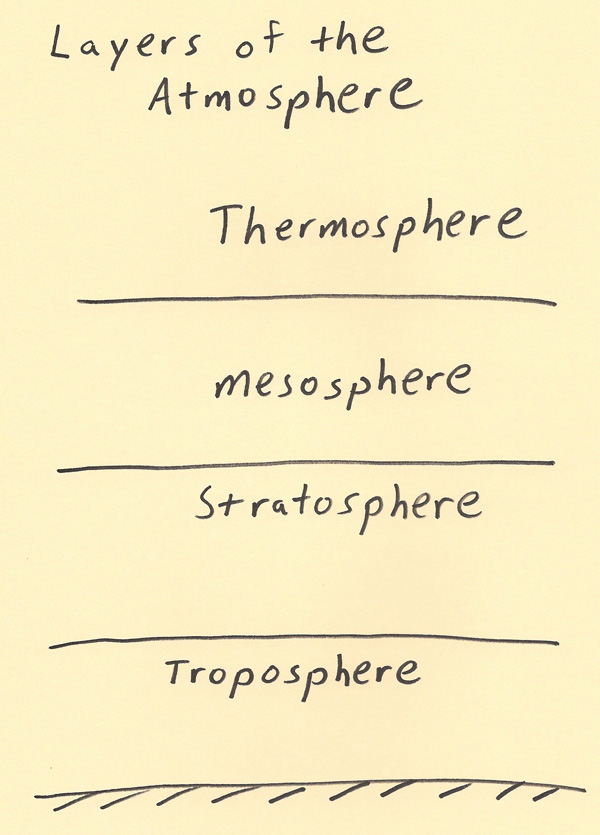
METEOROLOGIST JEFF HABY
The diagram below shows the 4 main layers of the atmosphere. The layer closest to the earth’s surface is called the troposphere. Much of the
observable weather occurs in the troposphere. The troposphere ranges from the surface to about 10 km in height. Since the earth’s surface
is warmed primary from the sun, the surface is generally the warmest while the temperature decreases with height within the troposphere.
The top of the troposphere has a rather abrupt transition where the temperature no longer decreases with height. This is what
causes much of the earth’s weather to be trapped in the troposphere. The very stable air above the troposphere, created by the
ozone layer, causes rising air from the troposphere to quickly cease once the air tries to penetrate this stable layer.
The layer above the troposphere is called the stratosphere. This layer is very stable since the temperature is typically warming
with height throughout much of the stratosphere. The stratosphere extends from about 10 km to 50 km in elevation above the earth’s
surface. This layer tends to not have much turbulence since it is above the layer in which convective mixing takes place. Above the
stratosphere is the mesosphere. It extends from about 50 km to 80 km above the surface. At these elevations the air is very thin.
Not much in the way of weather can occur in this layer since the air is extremely thin even though the temperature does decrease
with height within this layer. Above the mesosphere is the thermosphere. This layer is extremely thin in air pressure and gradually
merges into outer space with height. The layer of the thermosphere is most noted as the layer in which ions are present and
thus it is in this layer that the aurora primarily occurs within.

|
|
|

